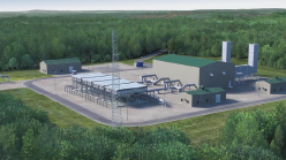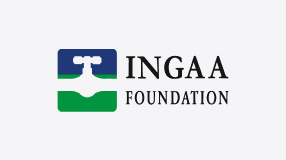There is a growing concern within the natural gas pipeline industry that turbidity based permit requirements for pipeline water crossings may be overly conservative and difficult if not impossibleto achieve. Many jurisdictions use turbidity, measured in nephlometric turbidity units (NTU), as ameans of measuring and controlling sediment released during water crossing construction.Instantaneous excursions above the stated limits can result in construction delays through workstoppage orders and/or prosecution of project sponsors and contractors for violations of Statewater quality standards. The widespread application of single turbidity standards (27 or 29 NTU’s) across the United States; the apparent lack of consideration for natural fluctuations; and, the poorly defined link between turbidity levels and adverse biological effects suggest that current standards are not based on scientifically defensible knowledge of the effects of sediment released from pipeline water crossings.
In addition to concerns over the validity of turbidity standards, the natural gas pipeline industry has noticed growing support for Horizontal Directionally Drilled (HDD) crossings as the preferred by regulatory agencies. Often HDD is viewed as the solution to all environmental problems associated with water crossing construction. Some insist that is the only allowable crossing technique for certain watercourses.
While most will agree that under the appropriate conditions HDD can be a cost effective and environmentally acceptable means of crossing construction, it should not be viewed as a panacea for addressing the environmental effects of pipeline construction. Rather, HDD should be among the suite of crossing techniques available to the industry for use as conditions dictate. Additionally, the effects of HDD crossing construction have not been well studied. A better understanding of potential environmental impacts from HDD crossings is required for balanced evaluation crossing techniques and their application to the specific water crossings.
These concerns and along with a literature review on the origin of turbidity criteria prepared by Argonne laboratories on behalf of the Gas Research Institute (GRI) were discussed at the Foundation Seminar on River and Stream crossings1 held in Orlando Florida September 8, 1995. Over 40 industry, research and government representatives attended this meeting. The meeting included an on-site survey of the post-construction impact of five rivers and streams that were crossed with various pipelining techniques. The following research questions were identified during this meeting.
- What are the impacts of concern associated with open-cut stream crossing methods?
- How do these concerns and scientific interpretation of criteria vary across the geographic (i.e. ecosystem) and regulatory landscape?
- How can alternative criteria for limiting sedimentation events be translated into permit guidance and conditions covering construction alternatives, methods and mitigation approaches?
- On balance, what is the role of methods such as directionally drilling in terms of overall cost effectiveness?
Golder Associates Limited (Calgary) was retained by the INGAA Foundation to undertake Phase I of the River and Stream Crossing Study intended to address these questions. The project includes five reports and CROSSINGTM, a personal computer-based decision and assessment support tool.
The following deliverables are included in this package:
- River and Stream Crossing Project (Phase I), Executive Summary.
- CROSSINGTM Beta Version 1.0 (Software) and Instruction Manual, Stream Crossing Decision Support System Beta-Version Topical Report.
Three additional technical reports can be obtained with the order form in the back of this Executive Summary:
- Sediment Entrainment Due to Pipeline Watercourse Crossing Construction (Technical Report 1).
- Suspended Sediment and Turbidity Criteria Associated with Instream Construction Activities: An Assessment of Biological Relevance (Technical Report 2).
- Review of Environmental Issues Associated with Horizontal Directional Drilling at Watercourse Crossings (Technical Report 3).





